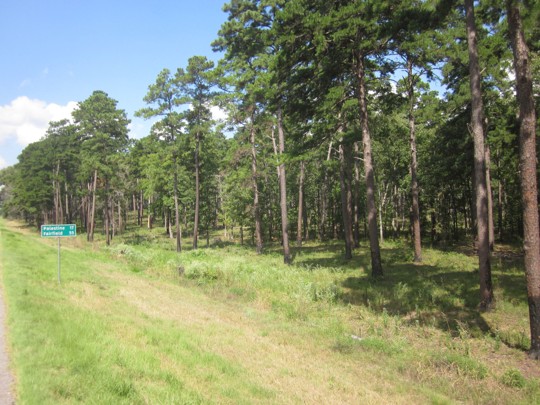Collaborative Conservation Efforts Celebrated at I.D. Fairchild State Forest Centennial Celebration
EDGEFIELD, S.C. — The National Wild Turkey Federation recently joined conservation professionals, land managers and private landowners to celebrate 100 years of stewardship at the I.D. Fairchild State Forest in east Texas. The centennial celebration and field day highlighted the forest’s legacy as a working demonstration forest, showcasing the ongoing habitat management and restoration efforts that benefit both wildlife and recreation.
Located in Cherokee County, the 2,788-acre I.D. Fairchild State Forest has long served as a vital site for silvicultural (the practice of managing and cultivating forests to achieve desired outcomes) and wildlife research. Studies and management practices on the forest have included timber harvesting, forest stand improvement, prescribed burning, wildlife habitat improvement and more. The forest is also a critical training ground for state and federal agency professionals in prescribed fire, dozer operations, timber cruising (measuring forest stands to determine stand characteristics, such as average tree sizes, volume and quality) and other land stewardship practices.
NWTF District Biologist Annie Farrell attended the event to present the NWTF’s contributions to habitat restoration on the forest, the history of the Eastern wild turkey in east Texas and practical land management strategies for sustaining turkey populations.
“It was an honor to speak about wild turkey history, habitat needs and the mission of the NWTF at the centennial celebration,” Farrell said. “The NWTF has a longstanding partnership with the I.D. Fairchild State Forest and surrounding region, and it was inspiring to hear from so many landowners who are seeing success and were eager to learn more about how they can support wild turkeys on their properties.”
Farrell discussed the wild turkey’s basic habitat needs — food, water, cover and suitable roosting structures — and emphasized the importance of managing for nesting and brood-rearing habitat through an open understory and diverse habitat structure. She also shared land management strategies such as prescribed burning, timber stand improvement, invasive species control, daylighting roads and edge feathering — all of which improve conditions not only for turkeys but for a wide array of wildlife and overall forest health.
“Healthy turkey habitats benefit more than just turkeys — it benefits pollinators, songbirds, deer and even water quality,” Farrell said. “When you manage for wild turkeys, you manage for the ecosystem.”
Since 2017, the NWTF has contributed more than $33,000 in funding — matched by over $166,000 from partners — to improve over 1,100 acres of habitat in the I.D. Fairchild State Forest.
Project highlights include:
- 2016–2018: $17,381 in NWTF funding supported 530 acres of mulching and 324 acres of herbicide application, laying the groundwork for prescribed fire.

- 2019–2021: $9,000 for herbicide treatments across 145 acres to reduce invasive vegetation and promote native plant growth.
- 2025 (Approved): $7,000 approved by the Texas NWTF State Chapter for 128 acres of chemical control (herbicide) of invasive species.
These projects aim to enhance roosting, nesting and foraging habitat for Eastern wild turkeys while also supporting the endangered red-cockaded woodpecker, which calls the forest home. Habitat restoration has focused on understory and midstory reduction in key red-cockaded woodpecker foraging areas — an approach that improves conditions for both species and fosters the development of native grasses and forbs.

Farrell also distributed the Habitat for the Hatch guide, a resource for private landowners interested in enhancing wild turkey habitat on their own properties.
About the National Wild Turkey Federation
Since 1973, the National Wild Turkey Federation has invested over half a billion dollars into wildlife conservation and has positively impacted over 24 million acres of critical wildlife habitat. The NWTF has also invested over $10 million into wild turkey research to guide the management of the wild turkey population and to ensure sustainable populations into perpetuity. The organization continues to deliver its mission by working across boundaries on a landscape scale through its Four Shared Values: clean and abundant water, healthy forests and wildlife habitat, resilient communities, and robust recreational opportunities. With the help of its dedicated members, partners and staff, the NWTF continues its work to provide Healthy Habitats. and Healthy Harvests. for future generations.
CONNECT WITH US
National Wild Turkey Federation
770 Augusta Road, Edgefield, SC 29824
(800) 843-6983
National Wild Turkey Federation. All rights reserved.